Manchester United - Collatz Conjecture Part 2 - The Manager
A three part series as to why Man Utd has become akin to solving the unsolvable math problem, continuing with how Ruben Amorim inexplicably threw the club into more turmoil than ever before
ICYMI, the first part looking at the board’s culpability
The pressure for Ratcliffe and co is on. Now, the focus is breaking out that loop of repeating the bad habits and this summer can go a long way to doing that. It is something that he will have to live with if he truly wants to take this club back to where he wants it to be.
… It’s a pressure that Ruben Amorim is increasingly finding himself under, particularly with the loss to Tottenham Hotspur in the Europa League final.
Amorim came in fresh faced and with different ideas. A manager supposedly befitting this new age of INEOS, that had been so grandiosely built in the fans’ head. A then 39 year old to dust off the cobwebs and bring a new lick of paint to the old darling that is the halls of Old Trafford and Carrington. Well, the renovations for Carrington are nearly complete and the designs for the ‘New Trafford’ have been mocked up but the proverbial cobwebs have grown in numbers. You’d be forgiven if you thought Amorim had got some of it in his hair and face, such is the greying he has suffered in his time here.
To put it bluntly, his 3-4-2-1/3-4-3 is incredibly ill-suited to the squad he has. He knew that. That is why comments such as “the storm will come” after one of his few wins against Everton seems so pertinent. Because after his first win, his first thought was not to encourage, but to temper. Is that a manager with foresight of things going this bad or did he think the storm would not last this long and cause this much damage?
It has been far from a pretty watch. The way in which Man Utd build up is underwhelming. It has become a feature that the CBs would have little options ahead of them, except to play it to the WBs, receiving the ball with their back to play and under pressure. This would mean either a hook forward that would inevitably come back or a pass back to where it came. That would leave the CB with little option but to go back to the keeper, who would launch it forward aimlessly for the other team to collect the ball and start their own attack.
Amorim has tried to come up with some innovative solutions to help us fix this. One that has been heavily leaned upon is having the central centre back push up into midfield when they are playing from the goal kick. Once the pass has been played, the GK moves forward to give another option. The problem is that a centre back in a space where there is more pressure will likely bring out their lack of technical ability to receive with their back to goal in the middle of the park. You saw it cause a goal against Newcastle in the 4-1 drubbing on Tyneside. The goalkeeper will be pressed easily and it is why even from goal kicks, he has to go long.
We never seem to make it difficult like this for the opposition though. The press was supposed to be pronounced and effective. In a settled shape, a 5-2-3 so the space would be in and around the midfielders but one of the CBs was supposed to push in to support if that happened. If teams wanted to build from the back, the CMs would be asked to push incredibly high. But this is where the ill-suited nature came in. The athleticism and endurance to do this had not been built in from pre-season and/or not with players that are able to do so.
This was particularly obvious in his first game against Ipswich Town. Due to the circumstances of the international break and injuries, it meant that Christian Eriksen and Casemiro would start together. Behind them, one of the three was Jonny Evans. Their combined ages on that day were 100. Seriously, that is not a joke. After a bright opening few minutes, McKenna’s Tractor Boys cottoned on and began to play in the spaces that were left by the fact that those three were simply not able cover their positions whilst possibly being able to get out to opponents in those spaces.
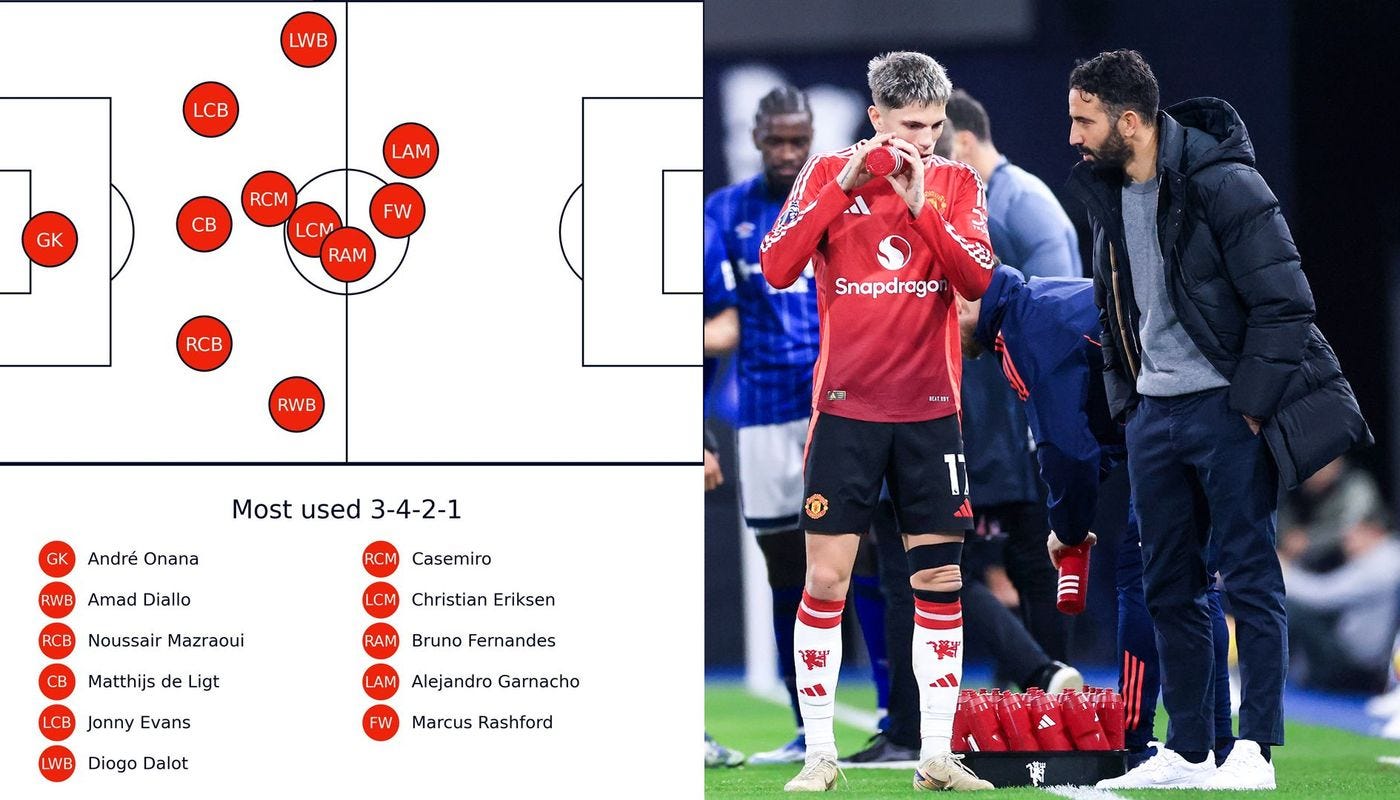
After the first few games, Amorim adapted the shape and the personnel. He began playing with more defenders on the pitch and playing in a lower block to stem the flow of goals at the back but any, of the little, attacking momentum we was undercut by defensive leaks. The change suited some players more than others.
The most obvious example was Casemiro, who struggled when Amorim first came through the doors. Once the block was dropped lower and there were more bodies around him, he began to flourish. He displaced Manuel Ugarte, a player who had worked under Amorim previously, perhaps better suited to the more octane way of playing initially and looking more haphazard in the more measured approach to defending. The margins of defeat became lower but they weren’t extinguished. Our ability to win seemed confined to the European rivals, ones not used to the intensity of the Prem.
The main issue a lot people have is that this formation seems like a departure from the philosophy and foundations of Man Utd. They see this shape lending itself more towards defenders and its the lack of wingers, a hallmark of Old Trafford traditions, is hard to stomach for those who oppose the manager. Amorim’s penchant to play full backs at wing back has not done anything to dispel this and the lack of offensive quality often makes the system feel like it is truncated.
Of course, the fact that he had more defenders than he had attackers meant that in order to have some depth in the front line within games, it would mean starting with defenders. The stats do show that a win was more likely to occur with attackers in one of the wing back positions but as the number of attackers were depleted, be it through injury, unavailability or being sent out on loan, it became clearer how much having full backs at wing back stunted our offensive acumen.
In Hate With The Shape Of You
What is particularly frustrating is that in my opinion, of all the shapes in football, the one that allows for the most fluidity and expression is the 3-4-3 formation. Teams naturally fold into the shape when they move between transitions and organisations states of play. Some of the most exciting football teams I have watched have played like this: Walter Mazzarri’s Napoli and Gian Piero Gasperini’s Atalanta; Antonie Conte’s interpretation at Chelsea yielded a Premier League title that was the then second highest points total in Premier League history. Marcelo Bielsa’s Chile, Johan Cruyff’s Barcelona and Louis van Gaal’s Ajax are further examples. Even Brendan Rodgers’ Liverpool in 2014/15 had a good stint playing it before other teams learned how to dismantle their specific set up.
What I am trying to show you is that these were front footed teams, differing in their directness in passing and pressure they applied on the ball. Van Gaal would often play central midfielders in a diamond shape and two of the front three were out and out wingers. Bielsa’s Chile set up similarly. Rodgers and Mazzarri implemented a box midfield with high wing backs. Conte’s is more similar to that of Amorim’s in terms of the positioning and the interpretation of the roles.
We have seen little changes into Amorim trying to coax something out of the players he currently has, but not anything like I expected. Perhaps the lack of contact time on the training pitch is to blame but that excuse wore thin as the months went on with him in the job. The little we saw was with Mazraoui coming inverting and Amad Diallo staying high and wide like in the Europa final to ensure the latter would get more 1v1 opportunities. Something similar was employed against Fulham but this time the Moroccan dovetailing with Bruno and encouraging Lisandro Martinez to go forward to help with progression.
Outside of that, maybe with a differentiation of the pressing scheme between a more man to man or zonal one, it has been the same since the drop to a low block and when you are continually losing games, not changing anything, just repeating what you had just done and expecting different results is madness.
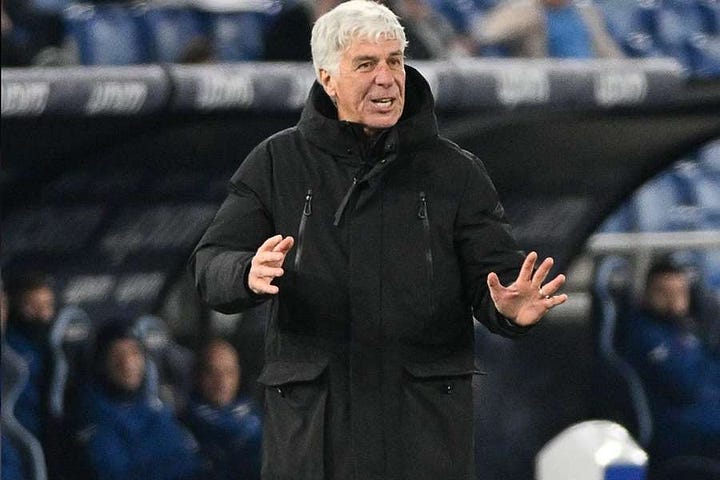
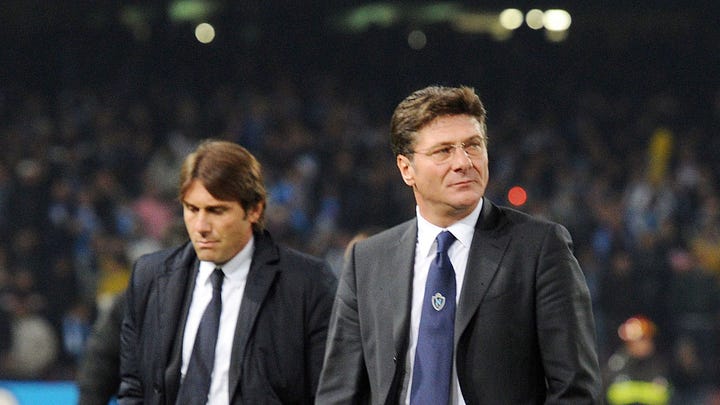
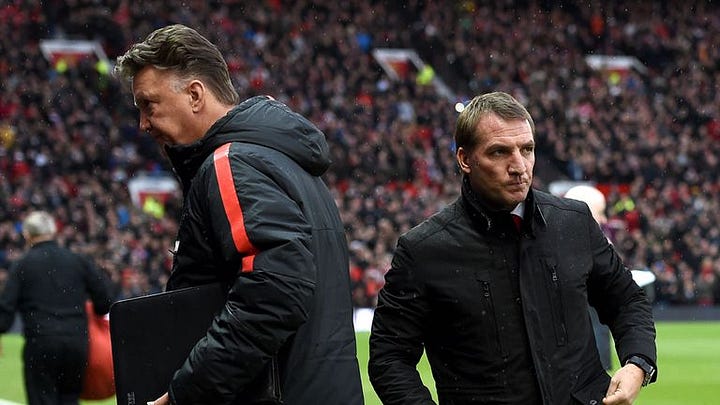
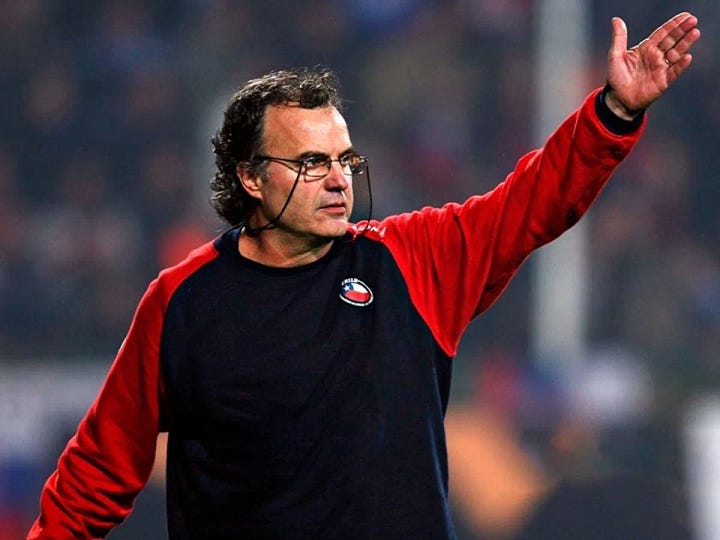
Versus Bodo Glimt, however, he did try something different. We went to a 4-4-2 system to counter against the Norweigan’s 4-3-3 when there was an opportunity to press them high up. The aforementioned Ipswich game is what prompted this change. That was his second game in the job and it was a pressing scheme he used readily at Sporting. It was what helped the team come from 2-1 down to win the game but it was also the reason why the concession of the Bodo Glimt’s second goal occurred. It was a risk that worked. Yet, that sort of innovation seems to have been beaten out of the manager. The manager proclaimed that something that would be seen from the offset was an identity and truthfully, it has not been.
I believe therein lies what is truly missing from this Man Utd side and what Amorim is trying to implement. Often times, when you see Man Utd play football, they are standing and doing so in straight lines. There is little depth to their play and positioning. The passes are hardly ever in behind because there is doubt about whether it can be trapped or if a player would get there but there is also that second bit of doubt where they are wondering if a player will even be in that vicinity in the first place.
One thing about those managers that have been mentioned above that have also played some variation of this formation is that they are quite big on positional play. With that, it needs proper practising. This is also something to point to the fact that this United team haven’t really had a manager in that vein for a long while. It won’t be new but it will still be a change, particularly when the usual positioning that a 4 at the back gives compared to a 3.
One manager I did not mention that played with a 3-4-2-1 was Thomas Tuchel with Chelsea. The reason being is that Tuchel has shown himself to be a manager that looks at the squad and proceeds to implement based on the personnel, their strengths, weaknesses and the squad composition. He is more than willing to play with a 4 compared with a 3, doing more of the former than the latter. In fact, outside of Gasperini, those managers there have changed between a 4 and 3 not just within their careers, but within seasons based on the requirements.
Amorim has not departed from this system since the famous story in his third game in management. In a story that would now be familiar to Man Utd fans, Amorim said to Casa Pia president, he would resign if he were to lose, after doing so in the first two. They won the third. After two more wins, he changed to a 3ATB system and they kept winning, ultimately leading to their promotion, a season Amorim had to leave halfway through because of complications with his coaching badges. He hasn’t departed from the formation since. But, what is maybe missing is the ability to implement concepts that can prompt fluidity having knowledge of coaching extensively in these two shapes.
That is not to say that Amorim has to depart from the shape but one thing that this awful season has given him for next season is what he lacked coming into the job - time and experience. The experience of knowing what it feels like to have the hot breath of the media, fans, rivals breathing down your neck bringing closer to the death knell and the close of the hellish trap door. He will be stronger for it but time will tell if he will be able to beat it. And the time to truly get his players in tune with whatever his system has to coach. Or even the time to make the necessary changes that will have Man Utd better suited to playing in the Premier League and with the players he will have at this disposal come the middle of August 2025.
Emotional Rollercoaster
However, that story of Amorim leads me to another point that has been a sticking area as the season progressed - his emotional and man management.
Amorim’s tortured figure on the touchline isn’t an act because he acts the same way behind closed doors. This is a manager that said he would leave without pay if the board decided he was no longer the right man after the consignment to Europe-less football next season. This is a man who apparently became so emotional after one game that tears formed in his eyes. The tactical TV in the United dressing room can attest to that. His emotional management seems to make him toil and push him to brink.
The fiasco of Marcus Rashford was one that coloured the first 3 months as manager. No one knew that as he trudged off Viktoria Plzen, that might be the last time Rashford kicked a ball professionally in the colours of Man Utd. The next game was the Manchester derby, where he and Garnacho were dropped. Rumours swirled as to why.
One was that both showed poor training in the lead up to the game, with it getting back to Amorim that the Mancunian had purportedly be out on the town in the city centre before. This was far from Rashford’s first indiscretion of this nature and it seemed to be a last straw, explaining why the severity of the punishment differed between him and the Argentine.
The other stated a fight between the two meant they were both punished and Rashford was banished for being on his last strike while Garnacho was given another chance. Another was a board manufactured decision for Rashford to be casted away as his wages were something that were beyond what he was delivering on the pitch and the club could no longer handle his level of wages. Garnacho was looked at as a potential asset to sale in case of PSR issues coming to bite United in the rear end.
Whatever it was, Amorim soon made it his own decision. At times, his actions stoked the fire more than he should have. Putting Rashford on the bench against Newcastle, due to there being multiple injuries, but refusing to bring him on despite being 2-0 down and playing absolutely awfully showed his hand that he was absolutely done with the player. Saying he would rather play a goalkeeping coach over any player not dedicated to the cause when answering a question about Rashford was probably the most damning part that permanently severed any potential for a reconciliation.
The Garnacho issue cropped up again after an explosive interview post the Europa League final, which culminated in Amorim apparently telling Garnacho to leave the club in front of everyone at a team meeting. Garnacho had an indiscretion between Man City and the final where he trudged off the pitch as he was substituted rather than staying on the bench. His punishment being paying for the evening meal for the players when they ate together. That’s not to count the social media actions from himself and his brother that seems to jar a little more each time it happens.
Man Utd has been a jaded institution and the players in it don’t buck this trend. The appointment of Amorim was a lightning rod for change and change is not always a good thing, particularly for players who don’t fit into the new order of things. One of the things that convinces you will be results and performances. Something that United have produced too few and far between under the stewardship of the former Benfica player. So that same passion becomes jarring. As their body language stoops, the manager will recognise and respond in kind.
The feedback loop happens and it can cause situations such as Garnacho and Rashford. That is not to say that is the reason but it is not a surprise that those two are the ones that are the biggest clashes thus far because both in the short and long term, they have been relied upon too heavily to carry the burden of Man Utd as a whole. It can drain and might be misinterpreted as a lack of focus, attitude problems etc. Amorim’s concern doesn’t seem to be a empathetic one.
For others, it might not be the same though. The fire that so clearly fuels his passion in management can make players follow him. Pedro Goncalves spoke about shedding a tear when Amorim told him he was going. Reports even suggest that the player played on an injury for Amorim’s last games, one so severe that it would keep him out until towards the end of the season. When he had to leave Casa Pia mid season, the whole dressing room was in tears about his abrupt departure. When they came back from 2-0 down to win 4-2 in a game, he cried tears of joy in the dressing room, completely different to the one he almost shed against Brighton.
That emotional connection and seeing that passion can invigorate it in those who follow you. The hope is that he is able to get that in the players he has currently. Bruno, Luke Shaw and Diogo Dalot came out to say that he is clearly the best man for the role and the work being done behind the scenes will show its fruition on the pitch.
The idea of Amorim going, of his own accord or at the pleasure of Ratcliffe, does not seem feasible given through the money situation we went through in part 1. There is a real chance for the manager here. With the prospect of a whole pre season and free weeks in between league games, for the majority of the season, means things like this can be worked upon. Outside of just winning games, being seen as having some sort of plan is perhaps what is needed most for most fans. It becomes tiring when you watch the games and you see that in order for other teams to go home with the points, they do not have to do a lot to get it.
Easy to take from, even easier to resist. That has been the story of Amorim’s Man Utd 2024/25. The sterile possession became more and more dispiritingly listless with each loss and the mistakes seemed to compound more and more with each one that was made. On that last day, after the win against Aston Villa, Ruben Amorim said the good times will be coming. He will need to keep to that promise very quickly because it does not take much for you to fall into that same loop he had last season where the chase became getting a first win in 1, 2, 4…

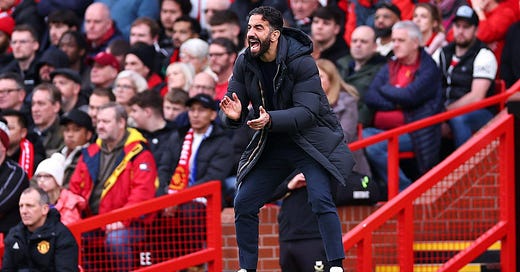



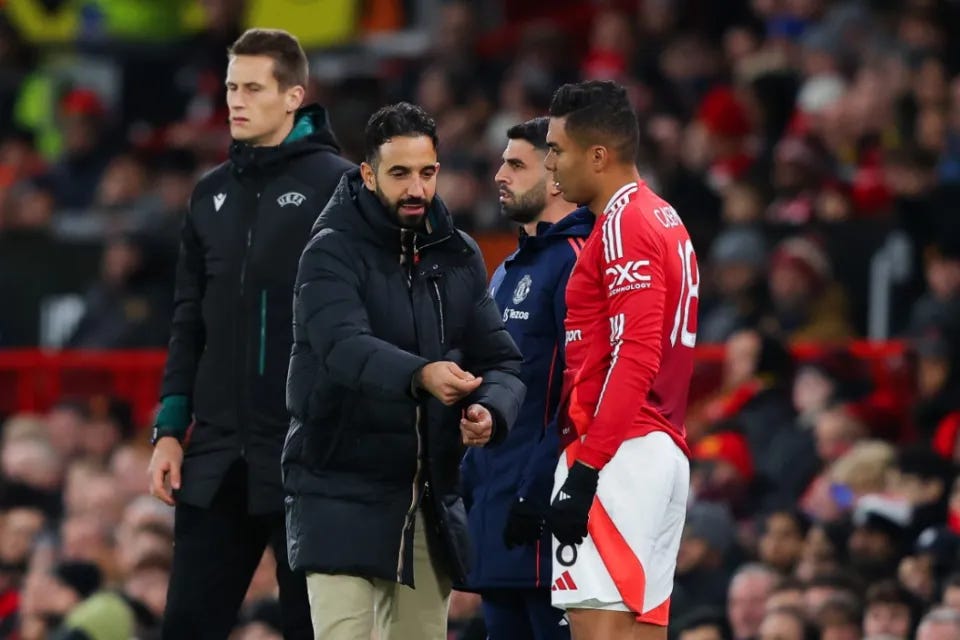
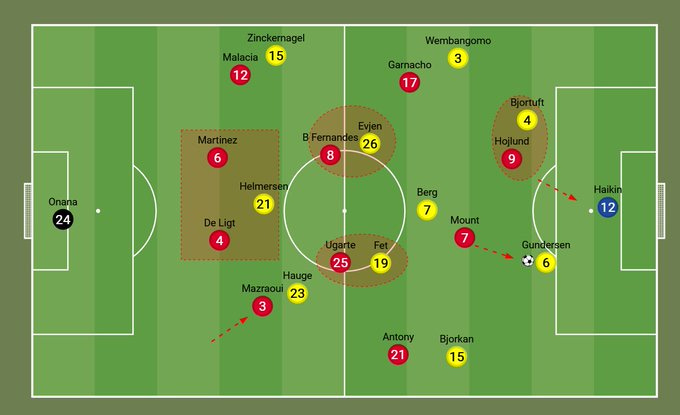
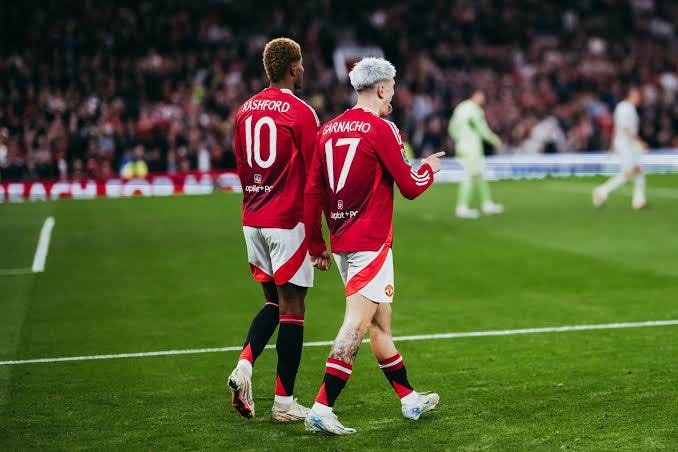
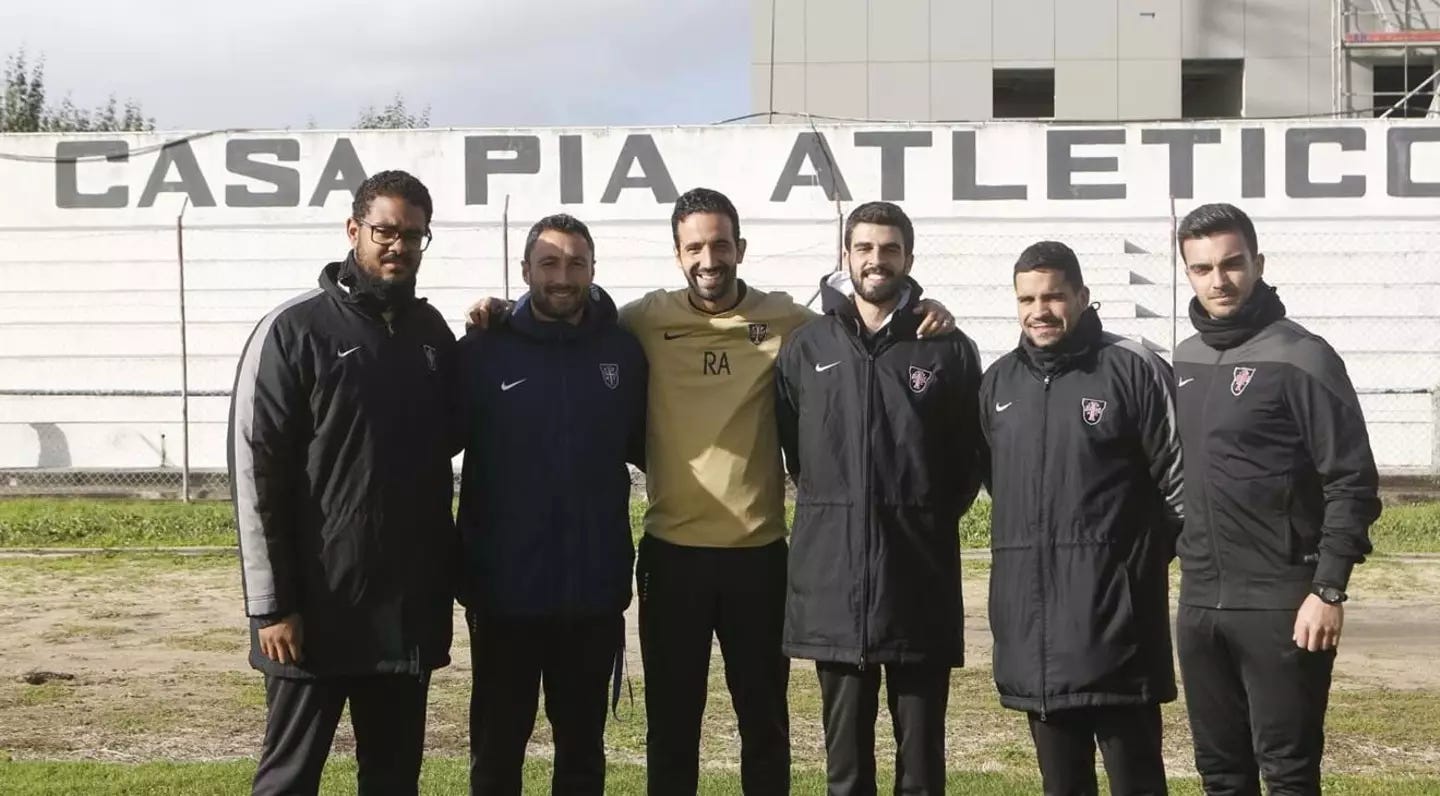
One thing I’ve noticed that determines whether we win (or at least create chances and be the better team even when we’ve lost) is the CBs ability (confidence) to be aggressive to the press and mobility. Is this a 2nd window issue for Amorim rather than one for now? As we have Heaven and Yoro. I need Maguire to play as little mins as possible